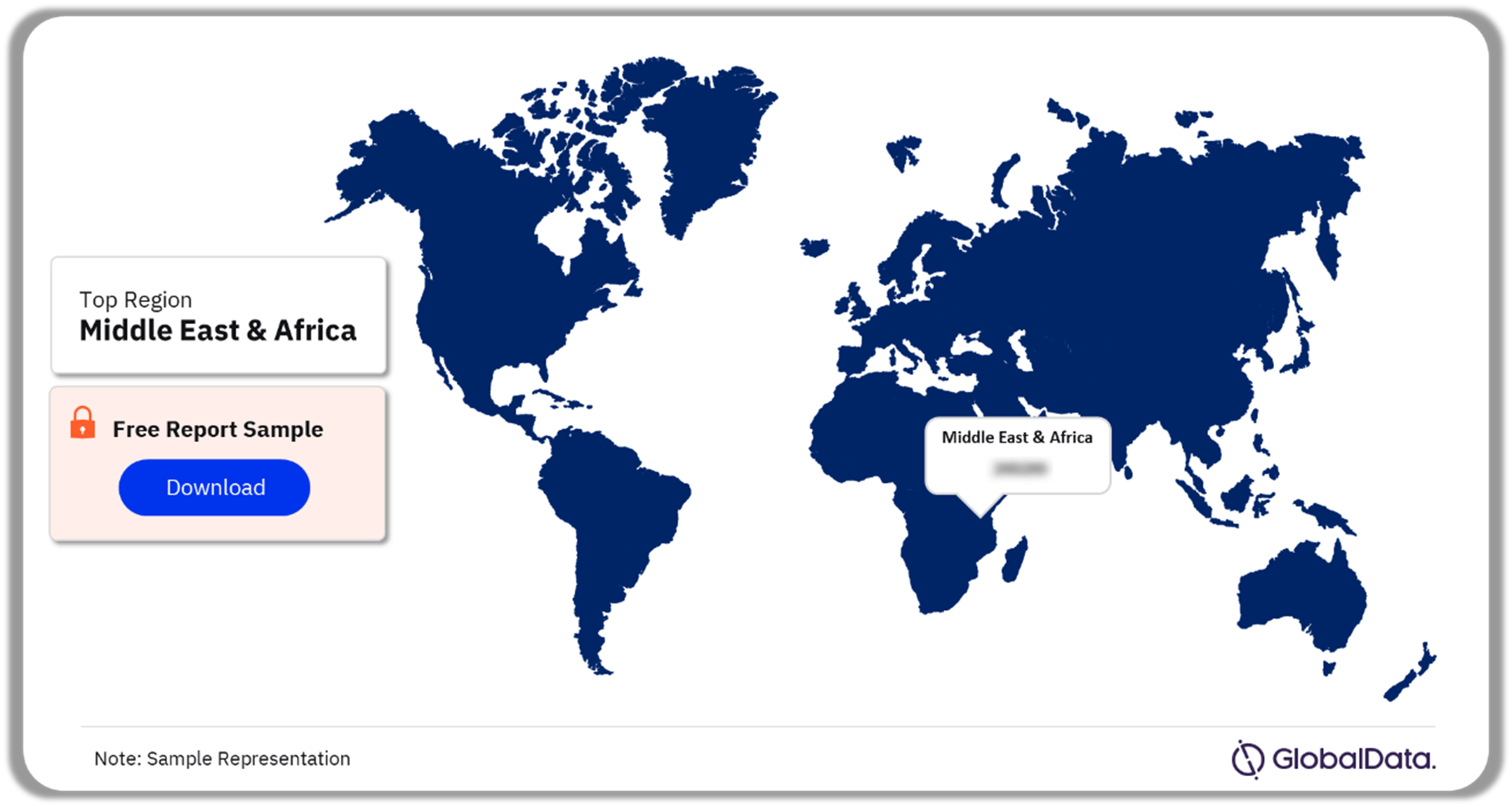Global Risk Report Quarterly Update – Q1 2024
Powered by ![]()
All the vital news, analysis, and commentary curated by our industry experts.
Global Risk Report Overview
The GlobalData Country Risk Index (GCRI) in Q3 2023 reveals a risk score of 44.3 out of 100 in Q3 2023. The decline in the risk index is attributed to positive factors such as easing inflationary pressures and a gradually improving labor market, contributing to enhanced consumer confidence.
However, the economic risk score increased to 45.4 in Q3 2023 from 43.1 in the same quarter of 2022, reflecting numerous challenges confronting the global economy. Persisting challenges impacting the risk score are geopolitical tensions, reduced external demand, elevated borrowing costs, and economic turmoil in China.
The “Global Risk Report Q3 2023” is based on GlobalData Country Risk Index (GCRI), which is a unique country risk-rating model. It determines the existing and future levels of country risk by assessing various qualitative and quantitative factors. The index is formulated to help firms prepare their global business strategies based on historical developments in an economy and their future expectations.
| Global Risk Score (Q3 2023) | 44.3 out of 100 |
| Key Regions | · Asia-Pacific
· Europe · Americas · Middle East and Africa |
| Enquire & Decide | Discover the perfect solution for your business needs. Enquire now and let us help you make an informed decision before making a purchase. |
Buy the Full Report for More Information on Global Risk Report Quarterly Update – Q3 2023, Download A Free Report Sample
Global Risk Report - Regional Analysis
The key regions contemplated in the Global Risk Report Q3 2023 are Asia-Pacific, Europe, the Americas, and the Middle East and Africa.
Middle East and Africa: The MEA region recorded a risk score of 53.5 in Q3 2023. The region’s risk profile is heightened due to economic instability because of declining oil production and geopolitical instability arising from ongoing conflicts. Compounding the challenges is a deteriorating humanitarian crisis in the area.
Asia-Pacific: Asia-Pacific has the second-lowest risk score in the world at 41.8 in Q3 2023. The region is home to many emerging and developing economies, including Vietnam, the Philippines, and India. These countries have witnessed tremendous growth lately owing to factors such as increased domestic activity, rising investments, and a rebound in tourism.
Americas: The Americas retained its second-highest global risk ranking with a risk score of 45.8 in Q3 2023, a marginal decrease from Q3 2022. The decline is attributed to factors such as alleviated inflationary pressures, a halt or reduction in the policy rate, a decrease in the unemployment rate, and an increase in consumer spending.
Europe: Europe remains the world’s least risky region, with a reduced risk score of 32.7 in Q3 2023, compared to 33.4 in Q3 2022. After successfully overcoming challenges posed by the pandemic and energy price shocks, Europe faces the complex task of reinstating price stability while nurturing strong and environmentally sustainable long-term growth. The growth forecast is shaped by the interplay of tightened macroeconomic policies and a resurgence in real incomes, propelled by decreasing inflation and rising wages.
Regional Risk Level – Q3 2023
Buy the Full Report for More Insights into the Regional Risk Level in Q3 2023, Download A Free Report Sample
Key Highlights
Global risk: In Q1 2024, the GlobalData Country Risk Index fell slightly to 57.21 from 57.31 the previous quarter, owing to improvements in inflation and employment, which boosted consumer sentiment. Emerging markets, excluding China, demonstrate resilience, potentially stemming from efforts in diversification and infrastructure enhancements. Nevertheless, obstacles persist, including elevated borrowing expenses and economic instability in China. Geopolitical tensions, and trade disputes, continue to exert influence, underscoring the need for adept management to maintain global economic stability.
Asia-Pacific: Despite being the world’s second-lowest risk region, Asia-Pacific’s risk score increased slightly, from 55.61 in Q4 2023 to 56.17 in Q1 2024, primarily due to economic uncertainty in China. The country’s economic outlook has been hampered by challenges such as a persistent property crisis, low consumer spending, rising youth unemployment, and structural economic issues. However, other emerging economies in the region are expanding rapidly as a result of increased domestic activity, rising investments, and a resurgence in tourism. Countries such as Vietnam, the Philippines, and India continue to thrive, supported by positive trends in investment and consumption.
Americas: In Q1 2024, the Americas maintained its position as the second-highest global risk region, with the risk score increasing from 58.53 in Q4 2023 to 58.86. The US economy faces challenges from elevated consumer debt and persistently high interest rates, while Canada grapples with similar issues due to strict monetary policies affecting business sentiment. In Latin America and Caribbean, security concerns persist due to escalating violence associated with narco gangs. Additionally, rising protests in countries like Mexico, Argentina, Cuba, and Haiti raise further concerns about stability in the region.
Europe: Europe maintains its status as the world’s least risky region, with a risk score of 43.78 in Q1 2024, showing a marginal decrease from 44.29 recorded in Q4 2023. The decline in risk score was underpinned by several positive factors, including the easing of inflationary pressures, a strengthening labor market, and a gradual uptick in consumer confidence. However, despite these encouraging trends, uncertainties loom due to ongoing geopolitical tensions. Furthermore, the potential for disruptions to global trade remains a key concern.
Middle East and Africa: The Middle East and Africa retain their status as the region with the highest risk level, with a risk score of 66.93 in Q1 2024. Escalating tensions between Israel and Iran, coupled with the ongoing conflict between Israel and Hamas, pose significant threats to regional stability. Additionally, the region faces challenges exacerbated by a worsening humanitarian crisis. However, there is a slight improvement in the risk score from the previous quarter, with the risk score decreasing from 67.29 in Q4 2023. This improvement is partly attributed to a rebound in Sub-Saharan Africa, driven by declining inflation rates and increased private consumption.
Reasons to Buy
Global Risk Report is a valuable tool that provides critical information and insights to support decision-making, protect your business or investments, and enhance your overall risk management capabilities.
Risk identification: A risk report provides an in-depth analysis of potential risks and threats that may impact your business or investments. It helps identify and prioritize risks, enabling you to take proactive measures to mitigate them.
Decision-making support: A risk report provides valuable insights and data-driven information that can assist you in making informed decisions. It helps you assess the potential impact of risks on your objectives and aids in developing effective strategies to manage and minimize those risks.
Business continuity planning: Understanding potential risks and their impact is crucial for effective business continuity planning. A risk report provides an overview of risks that could disrupt your operations, allowing you to develop contingency plans and ensure uninterrupted business operations.
Table of Contents
Frequently asked questions
-
What was the global risk score for Q3 2023?
The global risk score was 44.3 out of 100 in Q2 2023.
-
What are the key regions discussed in the global risk report?
The key regions discussed in the report are Asia-Pacific, Europe, the Americas, and the Middle East and Africa.
-
What region stands as the highest-risk region?
The Middle East and Africa have the highest risk score of 53.5 in Q3 2023 owing to the economic instability due to declining oil production, and geopolitical instability arising from ongoing conflicts.
-
What region stands as the lowest risk region?
Europe continues to be the least-risk region in the world after overcoming challenges posed by the pandemic and energy price shock.
Get in touch to find out about multi-purchase discounts
reportstore@globaldata.com
Tel +44 20 7947 2745
Every customer’s requirement is unique. With over 220,000 construction projects tracked, we can create a tailored dataset for you based on the types of projects you are looking for. Please get in touch with your specific requirements and we can send you a quote.
Related reports
View more Financial Services reports










